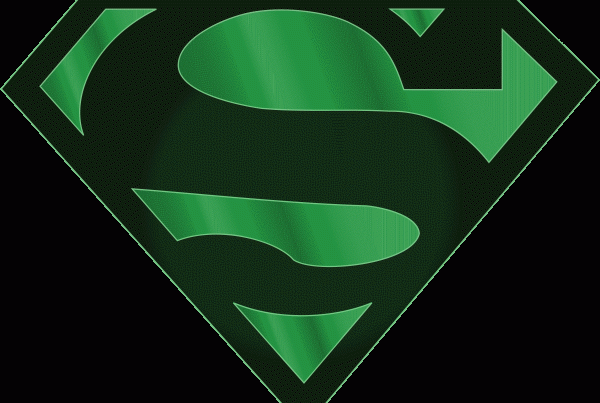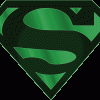
Who can forget the catchy 80’s jingle:
“Cheez Whiz adds personality, personality, so many ways to use it everyday!”
Cheez Whiz leaders use personality to add a little zip to their teams.
I am a recovering personality junkie. I was exposed to personality types early in my leadership journey through a program delivered by the University of Saskatchewan. The leadership program used the Meyers-Briggs Personality Type Indicator (MBTI). Taking this test turned out to be like taking a hit of heorin, I was instantly hooked.
I craved a deeper understanding of self and a desire to understand how to relate better to others. Along the way I have “used” a variety of drugs personality tests to enhance my Cheez Whiz leadership skills at home and at the office. I will provide a synopsis of those experiences at the end of the blog post.
I’ve been sober for about 7 years now. My discovery of Bowen Theory put an end to my quick fix search for personal growth and enhanced leadership competency and my avoidance of deep work. Understanding personality types and appreciating differences is useful for enhancing emotional intelligence but it doesn’t do much to advance emotional maturity. Markers of emotional maturity include:
- Self-Awareness
- Self-Responsibility
- Emotional Self-Regulation
- Relationship Connection
- Discernment in the Face of Confusion
Cheez Whiz kicks celery up a notch, but it will ruin a good steak. Advancing emotional maturity does not happen quickly or easily. If you’ve had experience with personality tests and are looking for some real meat schedule a no-obligation chat to explore how advancing emotional maturity can help you and/or your team.
Do you need one last hit? The following personality test is one of my favorites. It was delivered by David Irvine at one of his leadership sessions and he has provided me with permission to share it with you. To take the test – sign up for the monthly Thinc Tank Blog. Answer the follwing questions in the “Your Leadership Thoughts” dialogue box and I will send you the results:
- What is your favourite color?
- List your favorite animal and the attributes you like about it.
- You are walking along the beach and notice sea-shells and waves.
- What do you do with the sea-shells?
- How do you describe the waves?
If you are already subscribed to the blog and want to have some fun email your answers to [email protected].
Personality Test Synopsis
MBTI
This particular personality test is based on Carl Jung’s theory of pyscological types. The following are some of the useful insights that can be gained by understanding your preference within 4 dichotomies:
Extraversion (E) & Introversion (I)
- Where is your focus and source of energy?
Sensing (S) & Intuition (N)
- How do you prefer to take in information?
Thinking (T) & Feeling (F)
- How do you make decisions?
Judging (J) & Perceiving (P)
- How do you deal with the outer world?
The potential combinations of these preference yields 16 different personality types. Each personality type has characteristic strengths, leadership & learning styles, temperaments, and vulnerabilities. Gaining an appreciation for the different personality types can yield greater understanding of yourself and team. My test results yielded – ENFP. I took this test with leaders from across the organization I was working for but no one from my division was there to share my enthusiasm.
So, I encouraged my wife to take the test. She now has better understanding of how my personality type is superior to hers. Kidding, but seriously if you are going to engage in any personality type profiling I recommend you complete this work with a certified instructor that can facilitate the conversation and debrief with your team so that you don’t end up with unintentional consequences such as thinking that one personaility type is superior to another.
DiSC
The DiSC profile was created based on the theory of Dr. William Marston, a physiological psychologist, who shared it in his book “Emotions of Normal People”, published in 1928.
DiSC stands for:
Dominance
Influence
Steadiness
Conscientiousness
I used this tool to facilitate a team building session for one of the departments I lead. Similar to MBTI it fosters a better appreciation for differences between people and how best to work with those differences. One advantage of this assessment tool is the ability to provide additional reports on how best to work with a particular co-worker. A report was generated that compared the focus of my personality style (Di) vs. my Executive Assistants (DC). I gained a better appreciation for her focus on working analytically to ensure accuracy and she gained a better understanding of my desire to accomplish rapid results.
Birkman
Birkman is a proprietary methodology founded by innovative organizational psychologist Dr. Roger W. Birkman in 1951. I was exposed to the Birkman method through an executive coaching relationship. The assessment provides information on your Strengths, Needs and Stress Behaviours in the following categories:
Esteem (Sensitivity in relating to individuals)
Acceptance (Relating to people in groups)
Structure (Systems and Procedures)
Authority (Directing and Controlling)
Advantage (Idealism vs. Realism)
Activity (Preferred pace of action)
Challenge (Self imposed demands)
Empahthy (Feelings)
Change (Dealing with change)
Freedom (Personal Independence)
Thought (Active vs Reflective)
Two things stand out for me from this experience.
1) The coach reviewed my results with the Birkman Head Office, it turns out that of the 4,000,000 people that had taken the assessment there were only three other engineers with my personality profile. This little nugget was an extra hit for a personality junkie with a vulnerability for needing to feel special.
2) I found that the combination of understanding stress behaviours and the linkage to unmet needs especially useful.
Enneagram
Some believe the origins of the Enneagram can be traced to the sacred geometry of Pythagorean mathematicians and mystical mathematics.
Plotinus, in the Enneads, speaks of nine divine qualities that manifest in human nature.
Gurdjieff, a Russian mystic and teacher used the Enneagram to explain the unfolding of creation, calling it a symbol of perpetual motion. Movements, or sacred dances, constitute an integral part of the Gurdjieff Work. Gurdjieff sometimes referred to himself as a “teacher of dancing”. He alludes to the fact that he was introduced to the Enneagram in the 1920s during a visit to a monastery in Afghanistan, but he does not definitively explain the symbol’s origin.
The Enneagram test yields nine different personality types:
Type 1 – The Moral Perfectionist
Type 2 – The Supportive Advisor
Type 3 – The Successful Achiever
Type 4 – The Romantic Individualist
Type 5 – The Intellectual Thinker
Type 6 – The Loyal Guardian
Type 7 – The Entertaining Optimist
Type 8 – The Protective Challenger
Type 9 – The Peaceful Mediator
I was exposed to this test through a leadership development exercise with a past executive team.
Two things stand out for me from this experience:
1) I gained a better appreciation for a team member that I was particularly un-aligned with. Paradoxically, seeing the behaviours of that “Personality Type” de-personalized the situation. I was able to be less emotional and more thoughtful. By this time I had a fairly good working knowledge of bowen theory and was able to see, in a neutral way, the underlying forces that were motivating the behaviour. I believe the test assisted in developing that neutrality.
2) In follow up conversation one of the participants communicated to me “Wow, this explains everything, I now completely understand myself”. I think there is an inherit danger of taking personality assessments too rigidly. Other factors yield significantly greater potential for understanding self and advancing leadership competenncy. These factors include: sibling position, multigenerational family hisotry, transmission process, compensating patterns, repeating patterns, projection process, anxiety, nodal points, life forces, and over/under-functioning reciprocity.
Clifton Strengths Finder
This personality test was developed by Don Clifton. When he returned from World War II — after flying B-24s as a navigator and bombardier, for which he received a Distinguished Flying Cross for his heroism during his 25 successful bombing sorties — he felt that he had seen enough of war and wanted to spend the rest of his life doing good for humankind. This led to an intense interest in studying human development.
This is one of the many tests that I took on my own, outside of any formal workplace initiative. I was attracted to the idea of a focus on strengths. So much of my personality journey had been focussed on better understanding and compensating for my weaknesses. The test includes 34 strength themes. This is by far the most categories of personality within one assesment tool that I have come across. Intuitively it makes sense that the assessment will pick up on more nuance than other assessments like the Colors personality test that slot you into 4 different colors.
I could go on …. and on …. and on. I have taken many more personality tests – But I think you get the drift.
I don’t want to smother you with any more of my Cheez Whiz!





